Hello!!!
It’s June, people travel and the Italian major art cities are getting crowded more than ever. One of the main reason to visit one of those cities is the Renaissance.
Cities like Florence, Milan or Venice are mesmerising. Even those who are not too passionate about Art cannot be immune to the beauty and splendor mixed the energy and charm of modern-day Italy.
And this apply to me too!
I live very close to Milan and it’s only “normal” that I went to admire Leonardo or Michelangelo or Raphael works a lot of times, so I had this idea to put together a few notes and to share them with you.
I’m NOT a Scholar or a super expert on the topic, I’m just a curious guy who read, research and think before sharing his thoughts.
Here they are
Art and Science got the permission to be Creative
First and foremost, why it was such a creative period?
Among other events, the collapse of the late Middle Ages and the migration of Greek Scholars to Italy at the end of the Byzantine Empire opened the way for Renaissance Humanism. From there, the Renaissance spread all over Europe.
Michelangelo Buonarroti vs Leonardo Da Vinci
Probably the most known artists in the world. Everybody knows about Monna Lisa, the Sistine Chapel or the David or the Last Supper.
My interest and reverence about Leonardo genius started when I was in primary school and it is still strong these days. On the other hand, MIchelangelo works alwasy had a bold impact on me.
Oddly enough, I always had this kind of “tunnel vision” and it never occurred to me to look at the “Big Renaissance Picture” and into their so called “rivalry”.
Let me put some information side by side.
Another major actor in Renaissance: Raphael
Ignorance it’s not always “bliss”, right? Well, probably because I was distracted by Leonardo but I’ve never deepened my knowledge about Raffaello Sanzio, and I was SO WRONG!
In my skimming, surfing and just scratching the surface of the Renaissance history I learned that you can’t understand Leonardo and Michelangelo without considering Raffaello too.
Wait a minute! What happened and when?
Today we see the works of these Masters just side by side in museums and the that small date on the label it’s far from enough to give us the ability to put the facts and events on a timeline.
The best fun I had/have while reading about Renaissance was to find the infinite plethora of hearsay, fragmented information and gossip that surround those years and trying some fact checking.
To do that I just “visually mapped” the dots and made the connections.
One of the most interesting things I drawn is the timeline. I just choose the most known works of the 3 Masters and this is a limit, however, this super simple map can give an idea of the period.
A few Saucy pieces of gossip
I didn’t make a sketchnote for this, sorry.
Renaissance was a moment of liberation where some rigid concepts and rules were bent, maybe not formally but, for sure, practically. And, yes, this included sexuality.
Among others, sources 2 are those where is possible to have a few clues (just clues, nothing definitive) of the gossips and “love affairs” going on in those days:
The "Anonimo Magliabechiano": is an anonymous Italian treatise on art and painting that dates back to the 16th century. It is named after the Florentine bibliophile and historian, Antonio Magliabechi, who owned the manuscript in the 17th century. You can download the book here (in Italian).
“Le vite de' più eccellenti Pittori, Scultori e Architettori”:It was written by Giorgio Vasari, an Italian artist and art historian, and it is one of the most important sources of information on Renaissance art and artists. You can download the book here (in Italian).
Here a few examples of what the grapevine said about the 3 Masters:
Both Leonardo and Michelangelo were gay. The former, flamboyant and impudent, made no secret of his boyfriends, the latter, a solitary dedicated to his obsessive passion for art and devout Catholic, struggled his whole life about his sexuality.
Leonardo was anonymously accused of sodomy. Twice, in fact. In both cases, despite the fact that the penalties for sodomy could include imprisonment, fines, banishment, or even death, all of the accusations were dismissed because were filed anonymously.
The Hercules statue was commissioned to Leonardo. He never started the work and botched the marble block assigned to him. The same block was later used by Michelangelo do carve the David.
Raphael was an “icon of lust”. His love affair with Margherita Luti (la Fornarina) almost has an “epic connotation”.
While the records say that Raphael died of fever, Vasari says that the fever was from exhaustion, caused by his incessant love-making while working on the Loggia. Looks like he never disclosed this to his doctors so they gave him the wrong treatments, bloodletting included.
As I said, except for the Leonardo accusations that are documented, the rest is just hearsay, truth is that we will never know for sure.
One last thing: how they realized those huge paintings.
In more than few occasions I had to enlarge a small scale drawing I did on the iPad or paper to a larger surface, wall or sheet. I like to use the doodle grid and the technology makes it really easy.
Now think about the Last Supper (4.6 m x 8.8 m) by Leonardo,
or the School of Athens (5 m x 7.7 m) by Raphael,
Not to mention the Sistine Chapel or The Last Judgement (14 m x 12 m) by Michelangelo.
How was possible to paint these HUGE masterpieces with all those details and the perfect perspective and proportions?
The answer is: cartoon, grid system and spolvero.
A few links you may find interesting
Who Won? The Competition Between Leonardo da Vinci and Michelangelo : a nice read with a final narration of how the two worked in front of each other in the Grand Hall of Palazzo Vecchio.
A nice tutorial/description about Doodle Grids
Raphael’s School of Athens Explained
Did you like this newsletter? Please consider to give it a nice like and to forward it to your friends. That would be so helpful and I’m grateful.
In case you are not yet subscribed, you can do it here:
Until next time, take care and be happy today!
Mauro
PS: a kind of Colophon
Just a few words about where you can find some of the things I do/did:




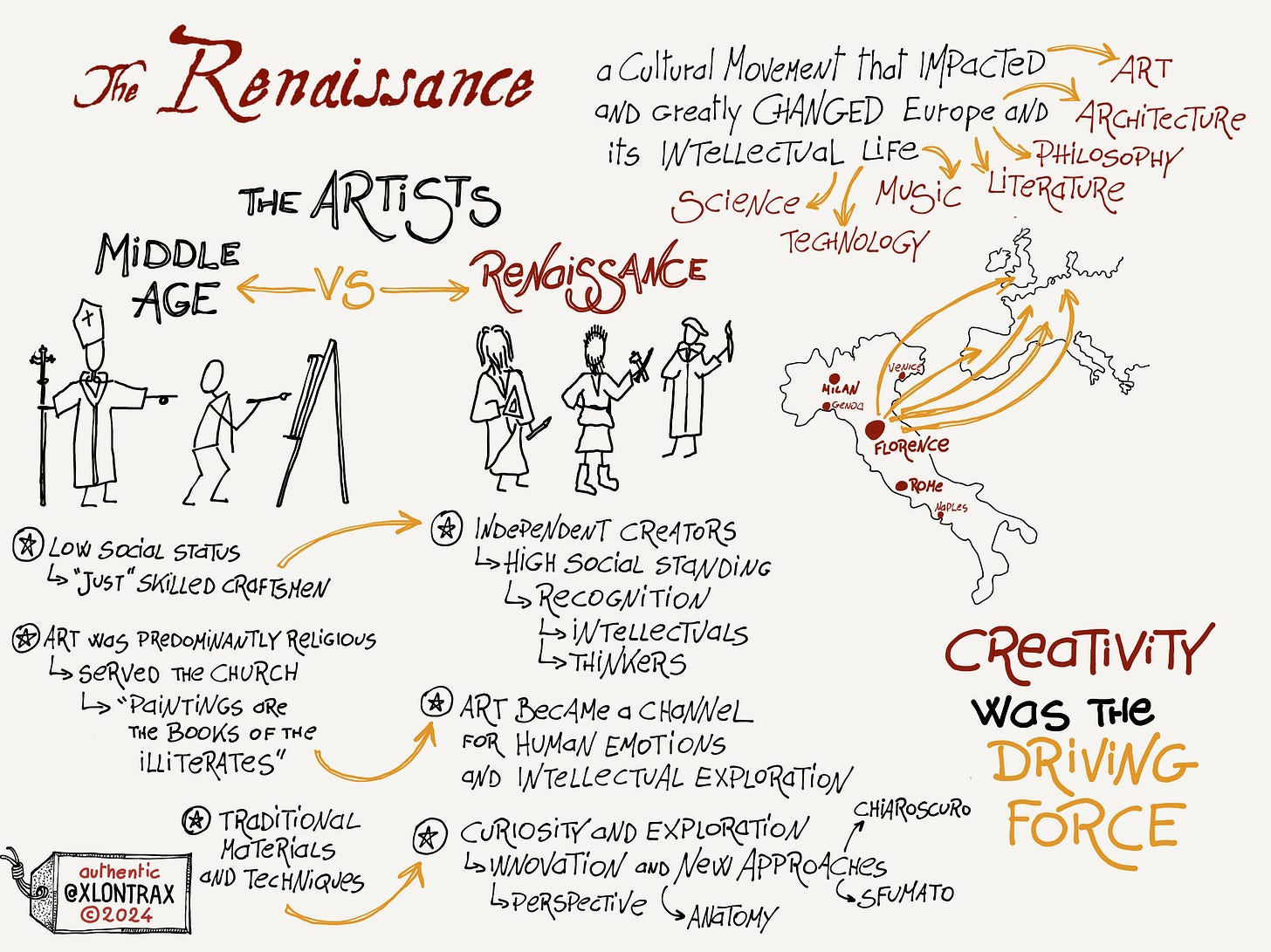
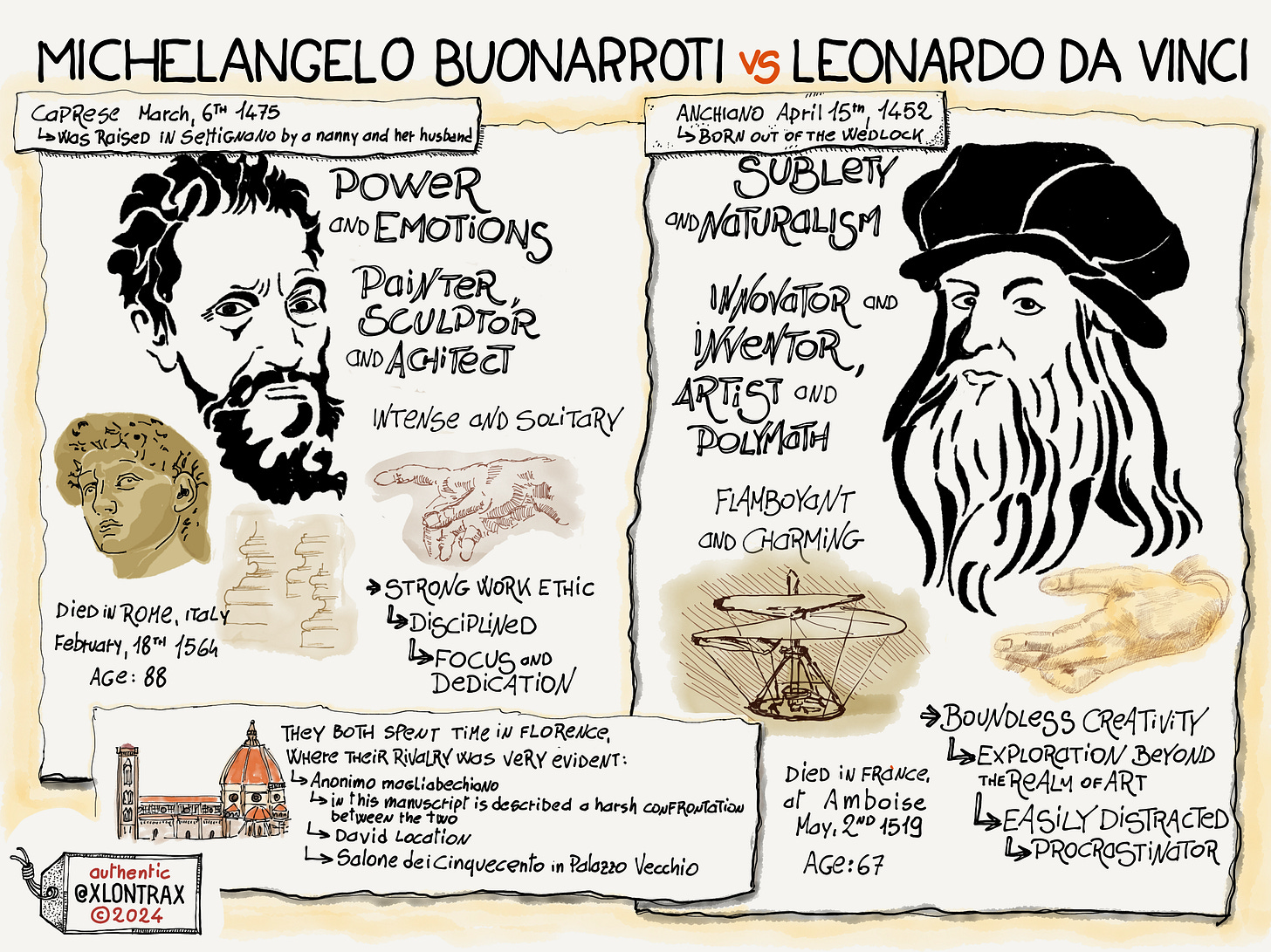
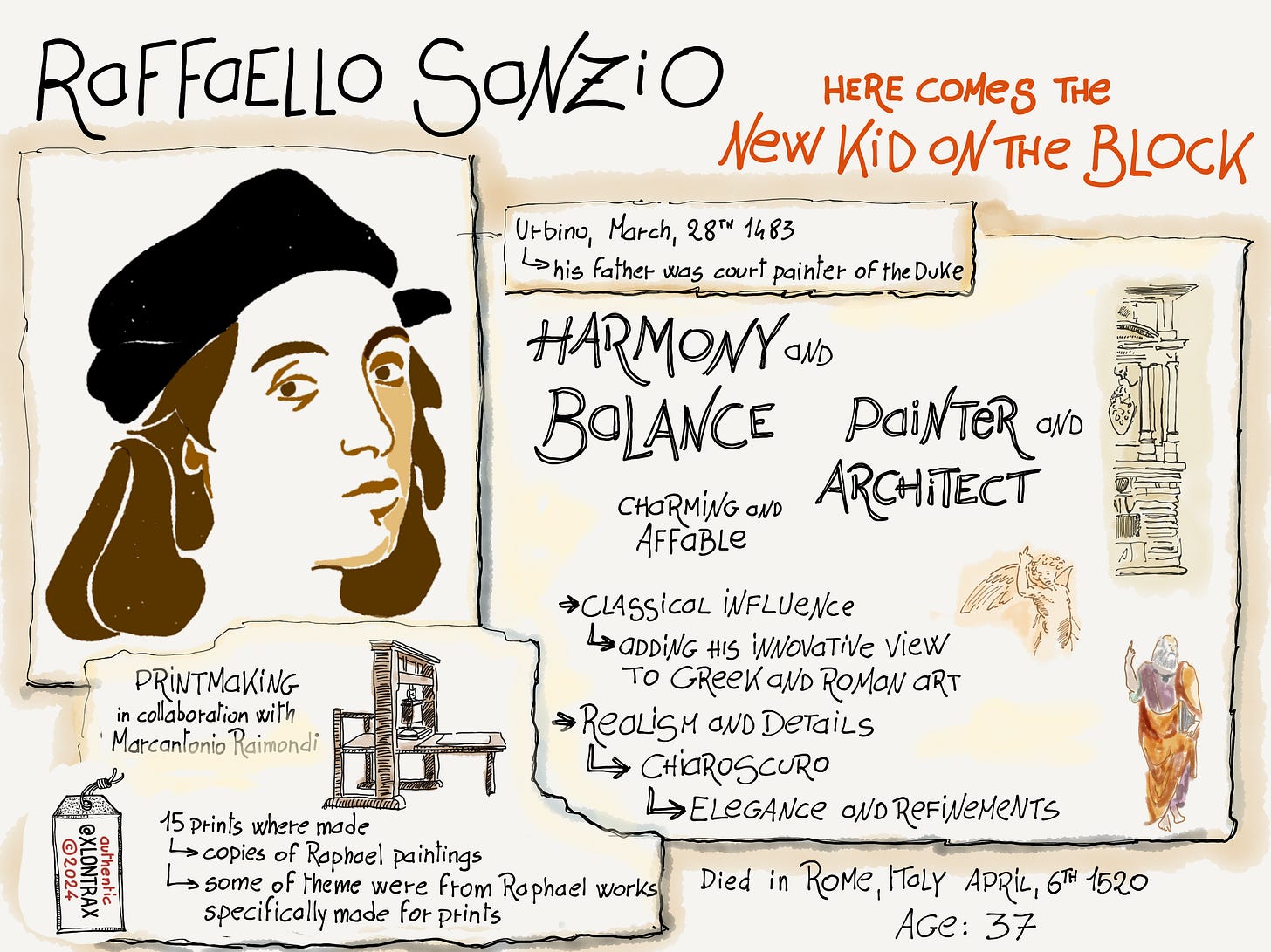
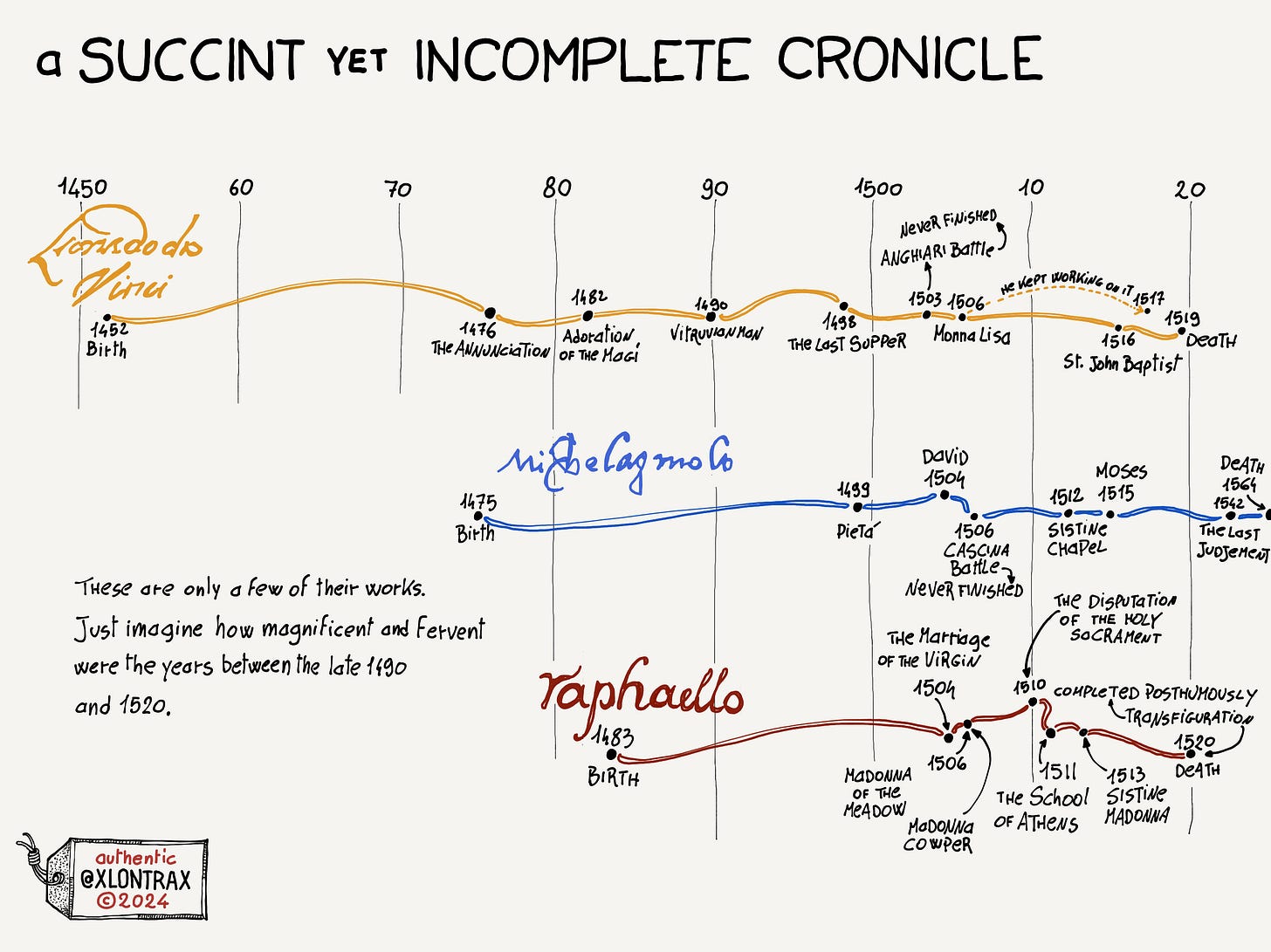
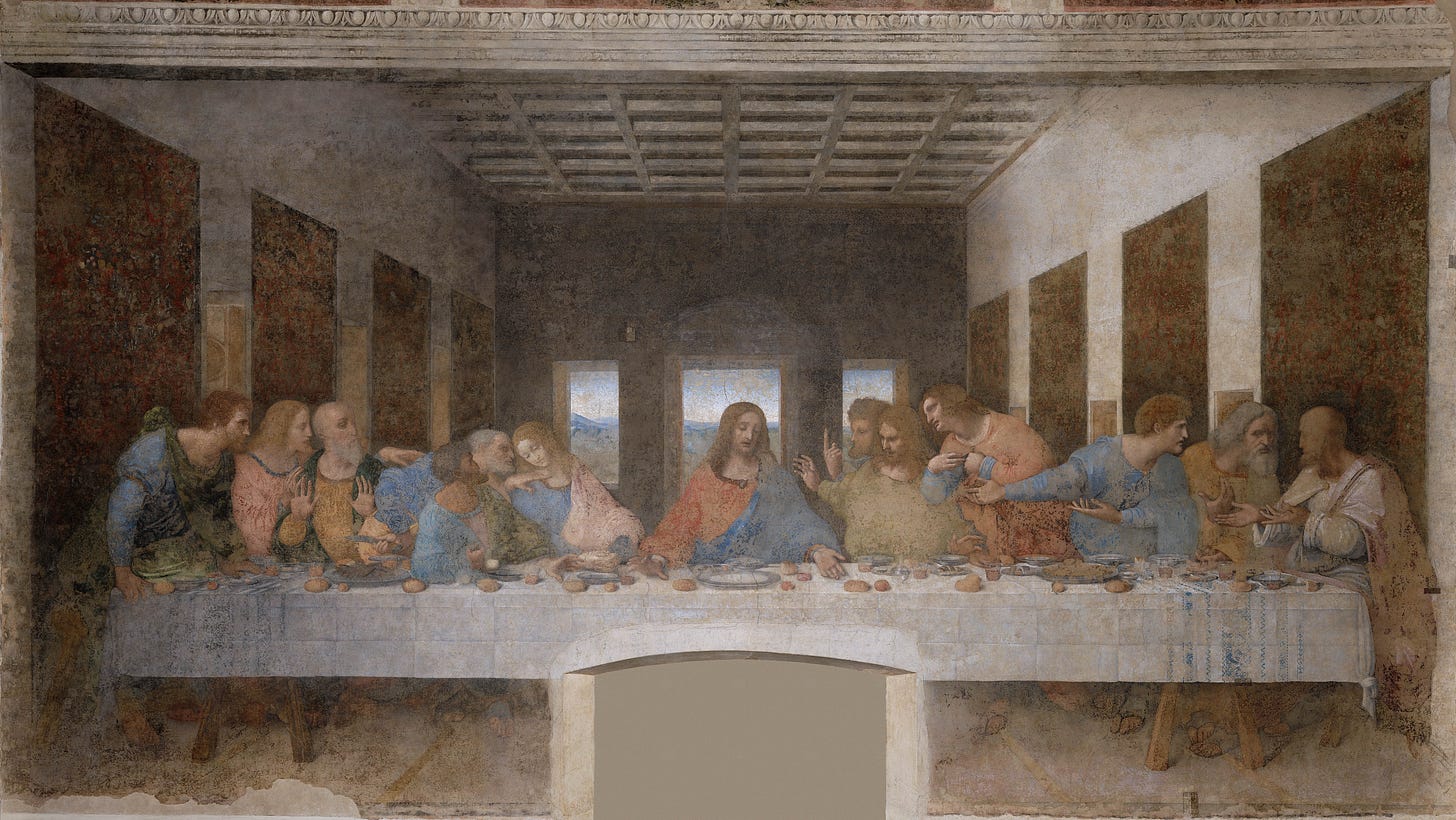
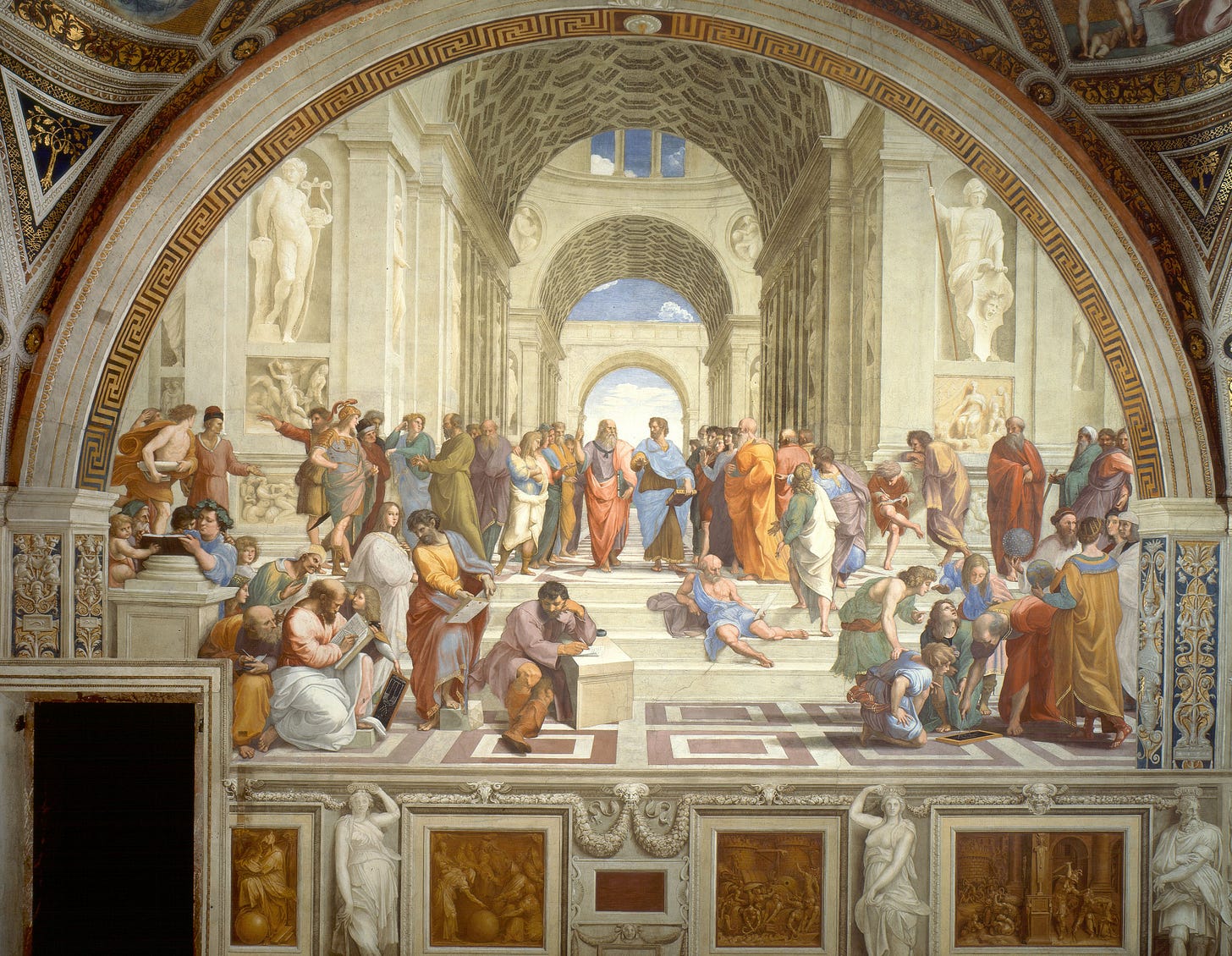
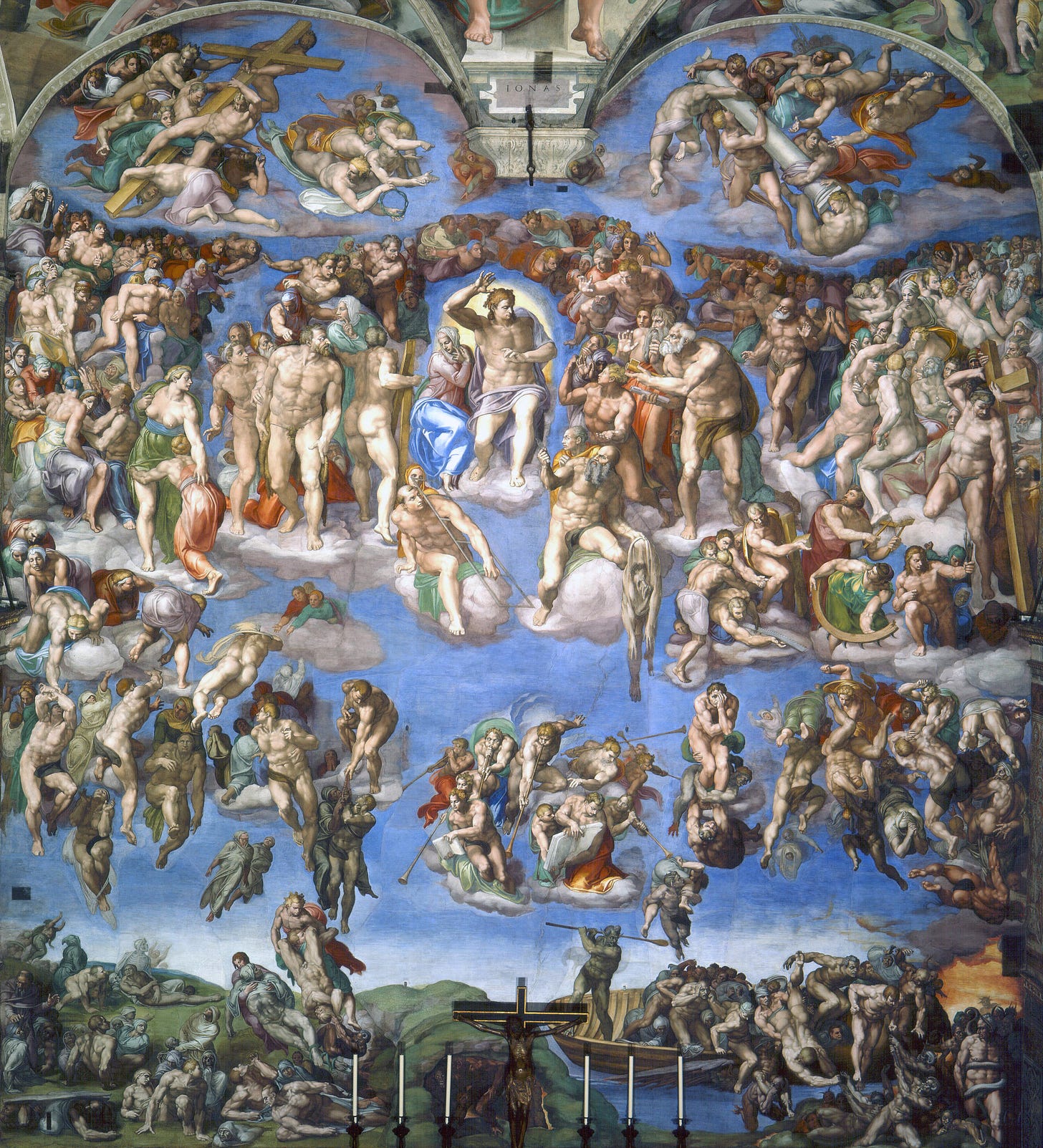
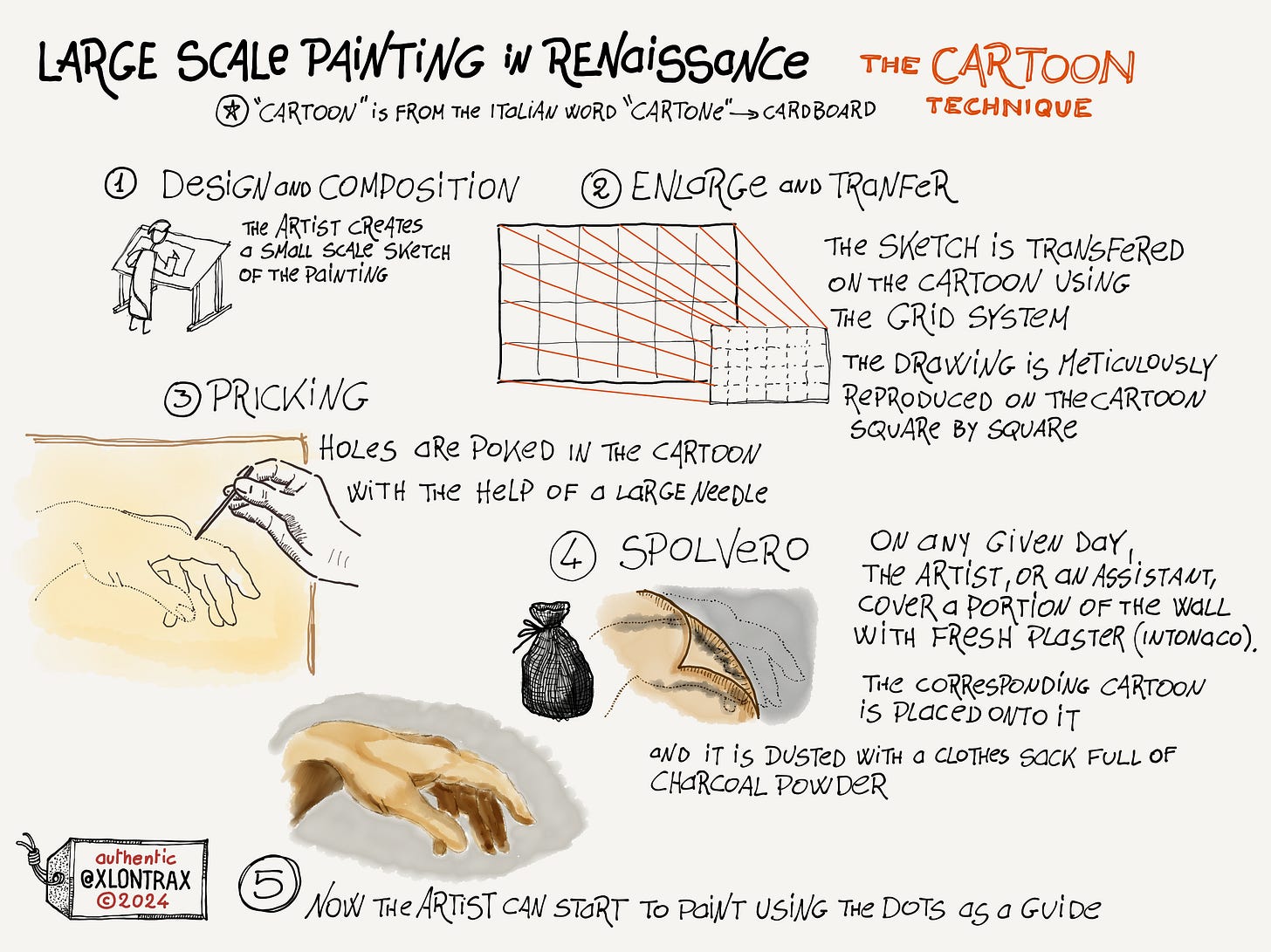
Thanks for sharing your research, Mauro!